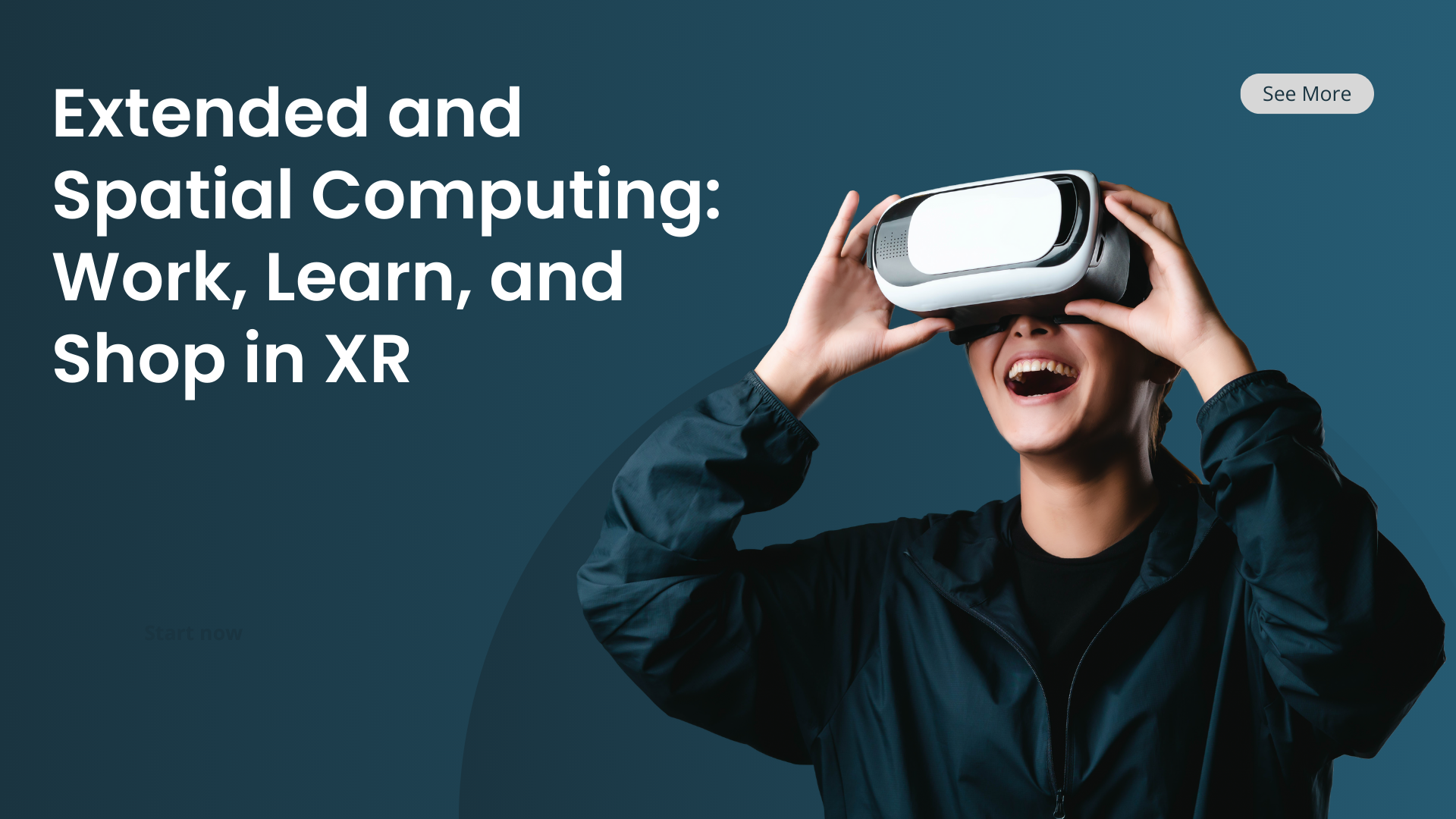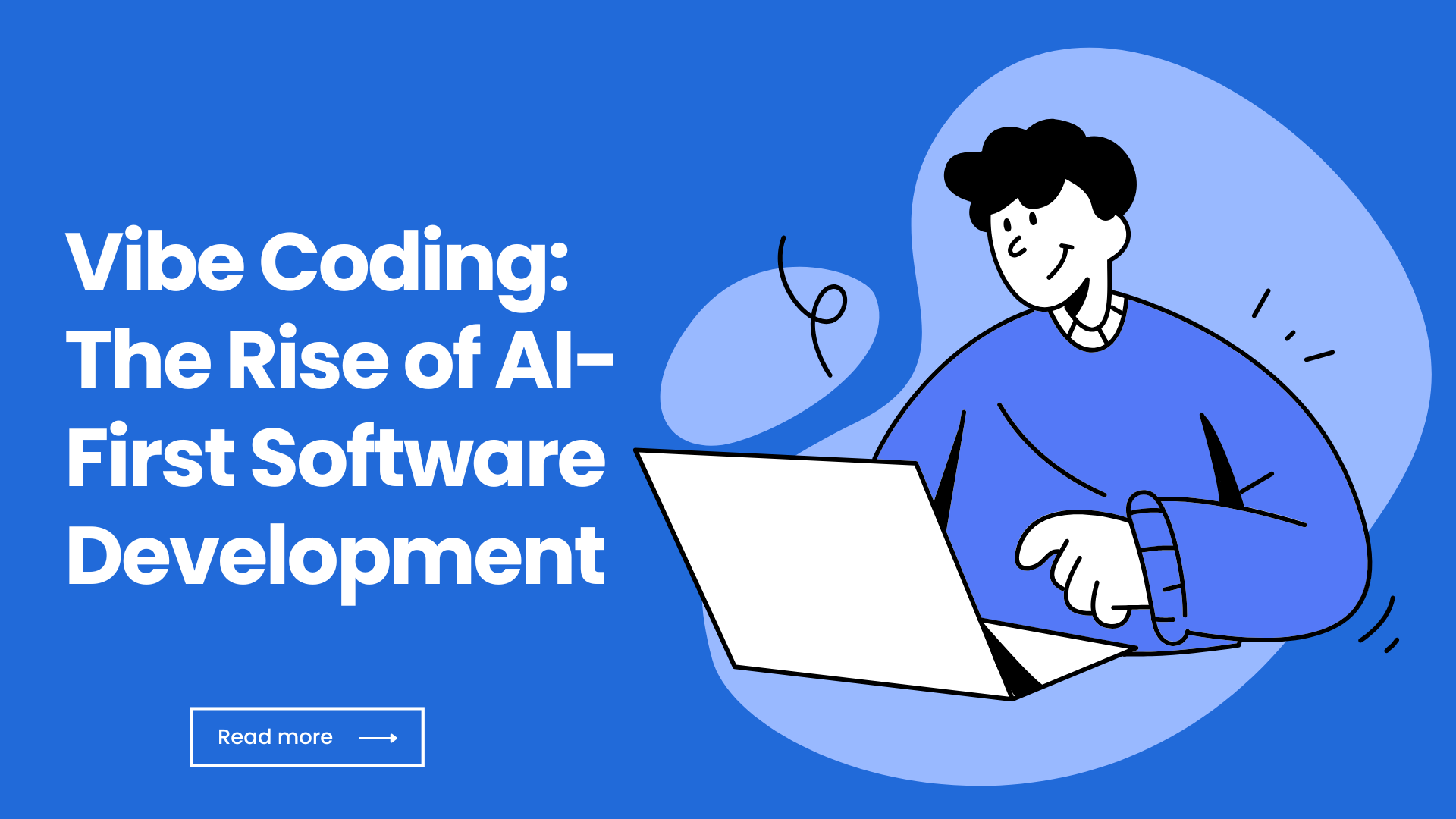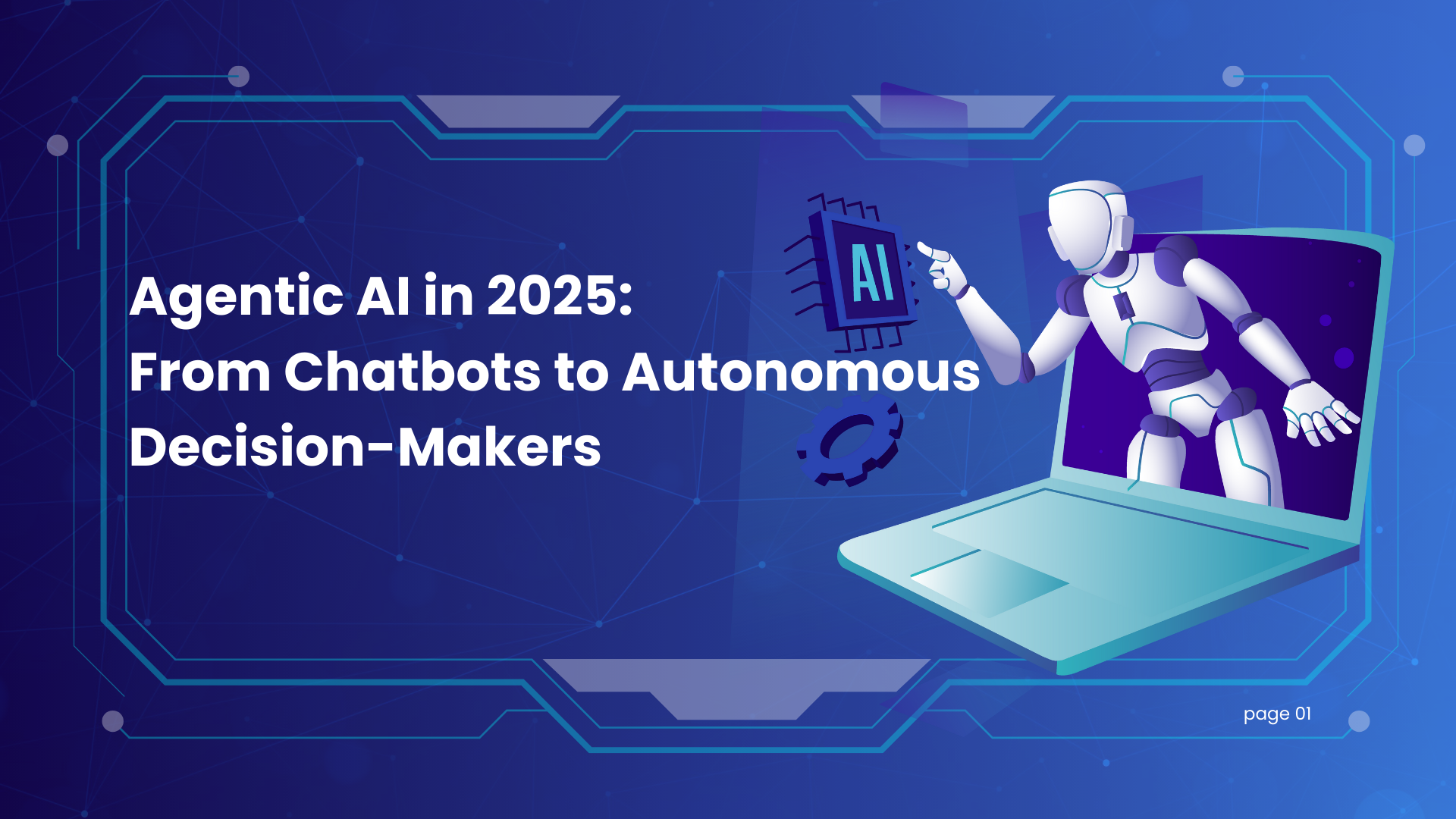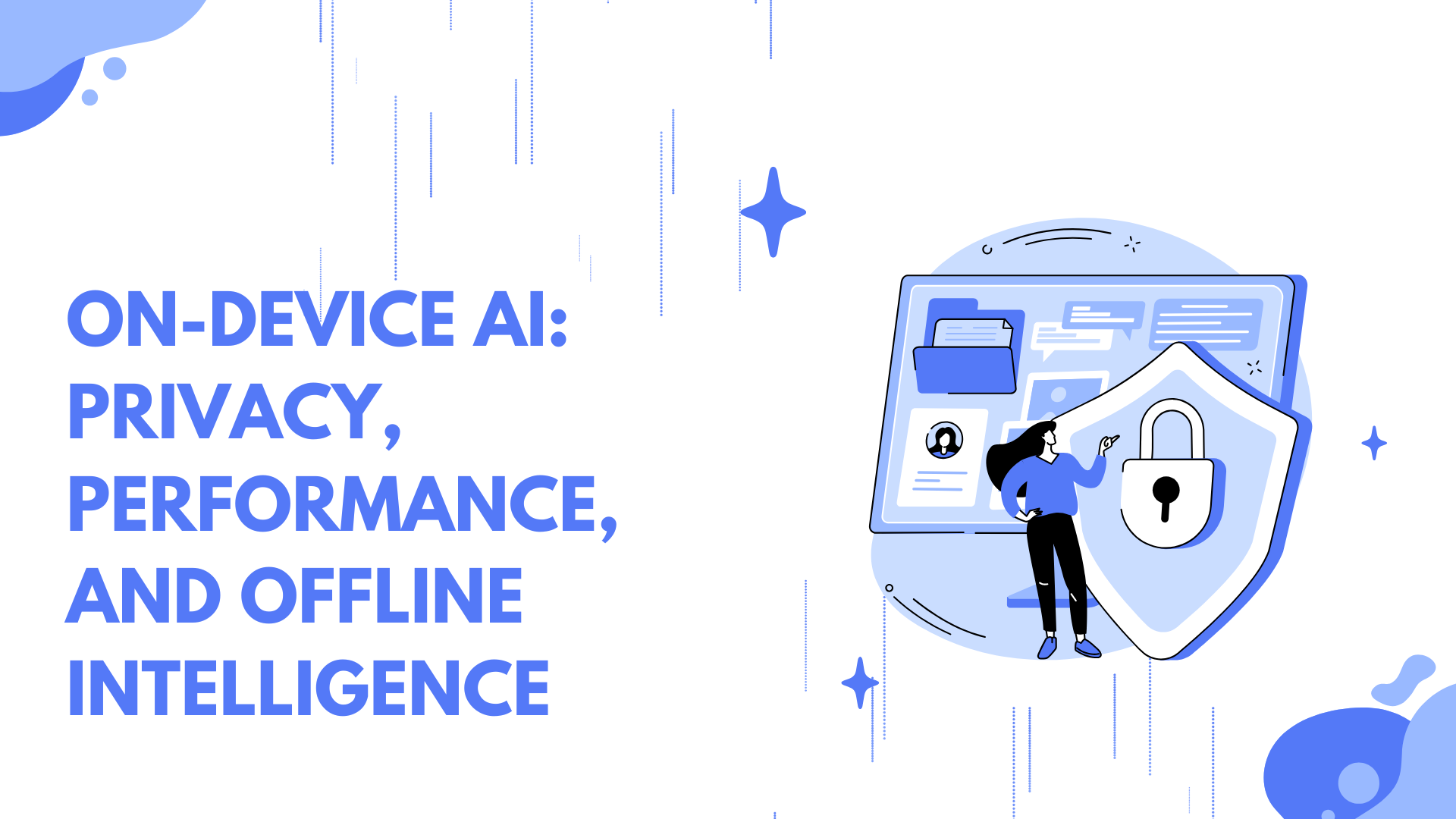For years, immersive computing has been a futuristic vision—something you’d see in sci-fi films or tech demos. But in 2025, Extended Reality (XR) and spatial computing are no longer just buzzwords; they are changing how we work, learn, and shop in real, measurable ways.
From Apple’s Vision Pro to Meta’s Quest headsets, and from enterprise training programs to virtual shopping malls, XR is merging physical and digital realities into one seamless experience. This shift goes far beyond entertainment—it’s shaping business operations, education systems, and consumer behavior at scale.
In this blog, we’ll explore what extended and spatial computing really mean, why they matter, how they are being applied across work, learning, and shopping, and what challenges and opportunities they present as we move deeper into an immersive digital age.
What Is Extended and Spatial Computing?
Let’s start with definitions:
- Extended Reality (XR): An umbrella term that includes Virtual Reality (VR), Augmented Reality (AR), and Mixed Reality (MR)—technologies that extend our perception of reality by blending physical and digital elements.
- Spatial Computing: The process of interacting with digital information in 3D space, allowing computers to understand and respond to the physical environment. Think of it as computing that goes beyond screens, keyboards, and touch gestures into the real world around us.
Together, XR and spatial computing move us from 2D digital interactions (like apps and websites) to 3D immersive experiences that mimic how humans naturally see, move, and think.
Why XR and Spatial Computing Matter in 2025
The timing of XR’s rise isn’t accidental. Several factors have converged:
- Hardware Maturity: Devices like Apple Vision Pro, Meta Quest 3, and HTC Vive XR Elite have made XR experiences smoother, lighter, and more accessible.
- Enterprise Adoption: Companies are using XR for training, design, and collaboration—where immersive experiences provide real productivity gains.
- E-Commerce Evolution: Online shopping is shifting from scrolling through flat product images to interacting with products in 3D or AR.
- Education Transformation: From K-12 to corporate training, XR enables learning-by-doing in safe, repeatable environments.
- Generative AI + XR: AI is enabling dynamic, personalized virtual environments—bridging imagination and reality.
This isn’t hype anymore—it’s a technological and cultural shift toward immersive computing as a mainstream interaction model.
XR and Spatial Computing at Work
Workplaces are undergoing massive changes due to remote collaboration, automation, and globalized teams. XR and spatial computing are redefining productivity in three major ways:
1. Immersive Collaboration
Instead of Zoom grids, imagine meeting colleagues in a shared 3D workspace. Avatars replicate real gestures, body language, and eye contact, bringing back the subtle human cues lost in traditional video calls.
- Virtual Offices: Companies like Meta and Microsoft are pushing VR workspaces where teams brainstorm around virtual whiteboards.
- 3D Data Visualization: Financial analysts or engineers can walk around datasets and models to explore insights.
2. Design and Prototyping
Spatial computing allows engineers, architects, and designers to build and manipulate 3D models at scale.
- Architecture: Walk through a digital building before it’s constructed.
- Automotive: Car companies test ergonomics and safety designs in VR before manufacturing.
- Fashion: Designers drape digital fabrics on avatars, reducing waste from physical samples.
3. Training and Upskilling
Enterprises are using XR for hands-on training in high-risk or high-cost industries.
- Healthcare: Surgeons practice procedures on digital twins of patients.
- Manufacturing: Workers learn complex machinery operations in VR simulations.
- Emergency Services: Firefighters and military personnel rehearse dangerous scenarios safely.
The result: faster learning curves, reduced costs, and higher retention.
XR and Spatial Computing in Learning
Education is one of the biggest winners from XR’s rise. Traditional learning relies heavily on text and 2D visuals, but immersive environments engage multiple senses, boosting retention and understanding.
1. K-12 and Higher Education
- Virtual Field Trips: Students explore the pyramids of Egypt or the surface of Mars without leaving the classroom.
- STEM Labs: Physics experiments or chemistry labs can be simulated in XR, eliminating safety risks and costs.
- Inclusive Learning: Students with disabilities can access adaptive XR experiences tailored to their needs.
2. Corporate Learning
Organizations spend billions on training employees. XR offers an affordable, scalable, and effective alternative.
- Soft Skills Training: Employees practice leadership or conflict resolution scenarios with AI-driven avatars.
- Compliance Training: Workers experience real-world consequences of safety violations in a safe environment.
- Continuous Learning: Gamified XR learning keeps employees engaged long after onboarding.
3. Higher Retention Rates
Studies show XR learners retain information up to 75% better compared to traditional training, largely due to the “learning by doing” effect.
XR and Spatial Computing in Shopping
Retail and e-commerce are being reimagined by XR in ways that blur the lines between physical and digital shopping.
1. Try Before You Buy
One of the biggest barriers in e-commerce is uncertainty. Will the furniture fit my room? How will these shoes look on me? XR solves this.
- AR Fitting Rooms: Apps let customers try on clothes virtually.
- Furniture Visualization: IKEA’s AR app shows how a couch looks in your living room.
- Beauty Tech: Sephora uses AR mirrors to apply makeup virtually.
2. Immersive Stores
Brands are building 3D shopping environments where customers can browse, interact, and purchase just as they would in physical stores.
- Virtual malls with customizable avatars.
- Social shopping where friends can browse together in VR.
3. Personalization
With AI integration, XR shopping experiences adapt in real-time to customer preferences—showing products tailored to individual style, size, and budget.
Key Technologies Powering XR and Spatial Computing
Several core technologies are driving the XR revolution:
- AR Glasses and VR Headsets – Apple Vision Pro, Meta Quest, Microsoft HoloLens.
- Spatial Sensors and Cameras – Depth sensors and LiDAR map environments in real time.
- AI and Machine Learning – Power personalized avatars, smart recommendations, and adaptive environments.
- Digital Twins – Virtual replicas of real-world objects, spaces, and systems.
- 5G and Edge Computing – Enable low-latency XR streaming.
Benefits of XR and Spatial Computing
- Efficiency: Faster design, prototyping, and training cycles.
- Accessibility: Brings immersive education and shopping to people regardless of location.
- Engagement: More interactive and memorable experiences than 2D screens.
- Cost Savings: Reduces need for physical prototypes, travel, and classroom setups.
Challenges and Limitations
Despite its promise, XR adoption still faces barriers:
- Hardware Costs: Premium devices like Apple Vision Pro cost thousands of dollars.
- Accessibility: Not all users can comfortably use headsets due to motion sickness or physical limitations.
- Privacy Concerns: Spatial computing devices collect sensitive data about movements, environments, and biometrics.
- Content Creation: High-quality XR experiences are expensive to produce.
- Interoperability: Different XR platforms often don’t play well together.
The Future of XR and Spatial Computing
Looking ahead, several trends will shape the next decade:
- Lighter, Cheaper Devices: AR glasses as common as smartphones.
- Persistent Spatial Web: The “next internet” where physical and digital realities are fully integrated.
- AI-Created Worlds: Generative AI will make creating XR content as simple as typing a prompt.
- Everyday Use Cases: XR not just for niche experiences, but for daily productivity, shopping, and communication.
Conclusion: Living and Thriving in XR
Extended and spatial computing represent more than just new gadgets—they are a new paradigm for human-computer interaction. By bringing intelligence and interactivity into our physical environments, XR is transforming the way we work, learn, and shop.
The office of the future isn’t a cubicle or a Zoom call—it’s a spatial workspace where colleagues across continents collaborate as if they were together. The classroom of the future isn’t a textbook—it’s a fully immersive environment where history, science, and culture come alive. The mall of the future isn’t a website—it’s a personalized, interactive space that lives in your living room.
The boundaries between physical and digital are dissolving. XR and spatial computing aren’t just about replacing reality—they’re about extending it. And in doing so, they’re reshaping how we live, work, and thrive in the digital age.









